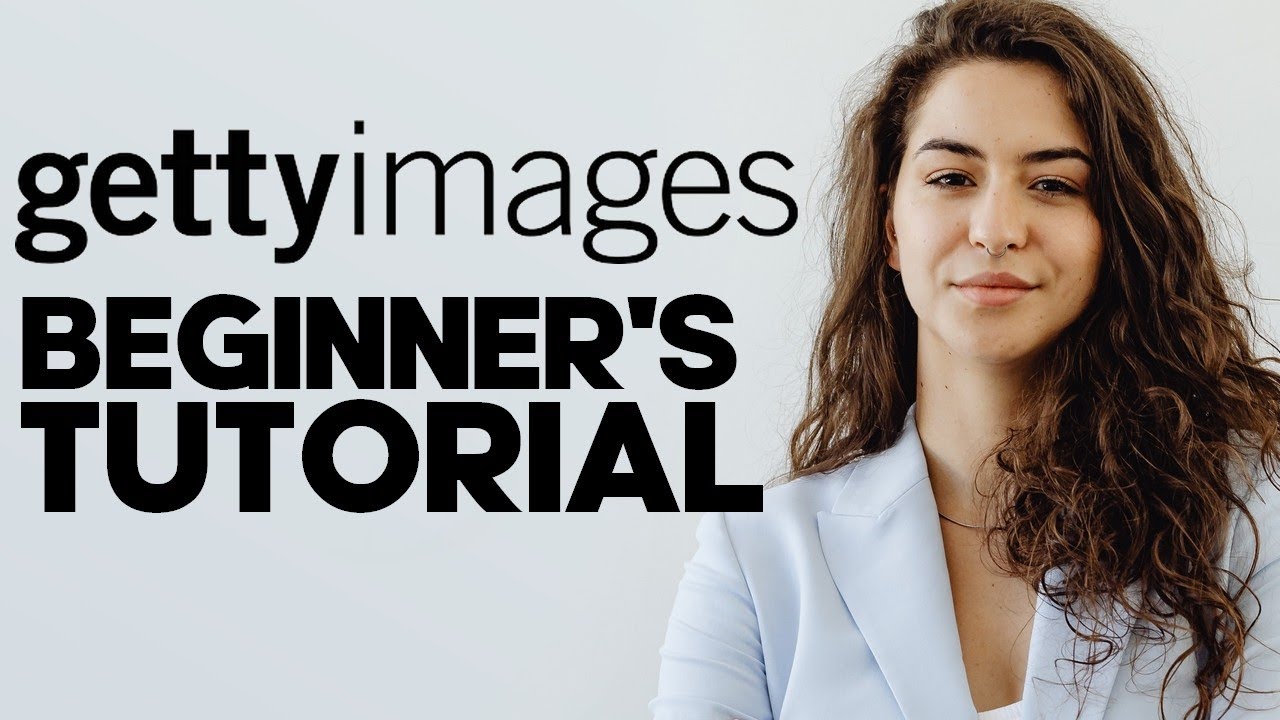In today's visually-driven world, having access to high-quality images can make all the difference in how your projects are perceived. Getty Images is one of the largest and most reputable sources for premium images, but navigating its vast library can be daunting. Whether you're working on a personal project, a marketing campaign, or educational materials, this guide will help you understand Getty Images and how you can effectively access high-resolution images tailored to your needs.
Understanding Getty Images

Getty Images is a global leader in visual communication, offering a vast array of content that includes photographs, illustrations, video clips, and music. Established in 1995, the company has built a rich portfolio of over 200 million assets spanning various categories and subjects. But what makes Getty Images stand out?
- Diverse Offerings: Getty Images caters to numerous industries, providing content suitable for advertising, blogging, social media, editorial use, and more. You can find images from renowned photographers and artists, ensuring your projects are visually stunning and impactful.
- High Resolution: One of the biggest draws of Getty Images is the quality of its assets. Many images are available in high resolution, perfect for both digital and print media. High-res images can help your project stand out, giving it a professional touch.
- Search Functionality: With robust search features, you can filter results by orientation, color, and even genre, making it easier to find exactly what you're looking for. Whether you need a dramatic landscape or a corporate team photo, just type in a few keywords, and voila!
- Licensing Options: Getty Images offers various licensing agreements that can fit your project’s needs, from one-time use to more extensive subscriptions. This flexibility ensures that you have the rights to use the images as needed without legal hassles.
Understanding Getty Images helps you leverage its vast resource pool effectively, ensuring your projects are enriched with high-quality visual content. So, let’s dive deeper into how you can easily access those stunning visuals!
Also Read This: Steps to Become a Contributor at Getty Images
Creating a Getty Images Account

Creating a Getty Images account is an essential first step if you want to access high-quality images for your projects. Luckily, the process is straightforward and can be done in just a few minutes!
To get started, head over to the Getty Images website. Here’s a simple step-by-step guide:
- Visit the Website: Go to www.gettyimages.com.
- Locate the 'Sign Up' Button: Usually, you’ll find this on the top-right corner of the homepage.
- Fill in Your Details: You'll be prompted to provide some basic information such as your name, email address, and a password. Make sure to choose a strong password to keep your account secure.
- Agree to Terms and Conditions: Don’t forget to read through Getty’s terms and conditions and privacy policy. If you agree, check the box!
- Confirm Your Email: You’ll receive a confirmation email. Click on the link in the email to verify your account.
- Start Exploring: Once your account is confirmed, log in and start browsing the extensive library of high-resolution images.
Having your own account allows you to save searches, create lightboxes, and even track your downloads. Plus, it can be a huge time-saver when you need to return for more images later on!
Also Read This: How Much Money Do You Earn with Getty Images
Searching for High-Resolution Images

Now that you have your Getty Images account set up, it’s time to dive into the treasure trove of high-resolution images. Searching effectively can make all the difference in finding the perfect image for your project.
Here are some tips to help you navigate the search feature like a pro:
- Use the Search Bar: Type in keywords that are relevant to what you're looking for. For example, if you need images of “mountains at sunset,” enter that phrase in the search bar.
- Filter Your Results: After you hit search, use the filters on the side. You can sort by image size, orientation, color, and more. Make sure to select “High-Resolution” to narrow your search effectively.
- Explore Categories: If you’re unsure what you want, browsing through categories can spark some ideas. Categories like “Nature,” “Business,” or “Travel” can lead you to stunning images.
- Leverage Advanced Search: Click on the “Advanced Search” option for more specific queries. You can find images by photographer, collection, or even specific licensing options.
- Bookmark Interesting Finds: As you search, consider creating lightboxes to save images you like. This feature allows you to gather multiple images in one place for easier access later.
With these tips, you’ll be well on your way to finding the high-resolution images you need to make your projects shine! Happy searching!
Also Read This: How to Submit Your Photos to Getty Images Step by Step
Using Filters to Narrow Down Your Search
Navigating through thousands of images on Getty can feel overwhelming, but fear not! Using filters is a surefire way to streamline your search and find exactly what you’re looking for. Imagine you’re searching for that perfect picture of a sunset over the mountains. Instead of scrolling endlessly, you can employ a few handy filters to save time and effort!
Here’s how you can effectively use filters:
- Content Type: Decide if you want photos, illustrations, vectors, or videos. This one choice can drastically change the results!
- Orientation: Choose between landscape, portrait, or square images to match your project requirements.
- Color: If you have a specific color theme in mind, selecting a primary color can help narrow down options that fit your palette.
- Size: Filter by image size to ensure you get high-resolution files that won’t pixelate in your project.
- People: If you need images featuring people, you can filter by models, ethnicities, and even age groups!
Once you’ve selected your filters, just hit apply and voilà! You’ll see a refined gallery of images that meet your specific criteria. This feature not only saves time but enhances your creativity by directing you to the images that truly resonate with your vision.
Also Read This: How to Start Uploading Photos for Getty Images
Understanding Licensing Options
When it comes to using images from Getty, one of the crucial aspects to grasp is the licensing options available. Understanding these can prevent any mishaps down the line, ensuring you’re using images legally and appropriately.
Getty offers a variety of licenses which generally fall into two main categories:
| License Type | Description |
|---|---|
| Royalty-Free | You pay once and can use the image multiple times without recurring fees. Perfect for projects with ongoing use! |
| Rights Managed | These licenses are specific to the project details, like duration and distribution. They allow for more control over how the image is used. |
Additionally, you need to pay attention to the usage restrictions. Some images may have limitations on commercial or editorial use, while others may require attribution or come with specific guidelines. It’s essential to read the license terms thoroughly to avoid any legal issues.
Being informed about licensing helps you choose the right images while respecting the rights of the creators. So, always check your licensing options before proceeding with any project! This little bit of diligence can save you a whole lot of trouble in the long run.
Also Read This: How to Become a Contributor to Getty Images – A Comprehensive Guide for New Photographers
7. Downloading High-Resolution Images
Downloading high-resolution images from Getty Images can unlock a world of visual possibilities for your projects. Whether you’re working on a marketing campaign, designing content for social media, or creating a presentation, high-quality images can greatly enhance your message. Here’s how to efficiently download these images:
- Choose Your Image: Begin by browsing the extensive collection on the Getty Images website. Use keywords, filters, and categories to narrow down your search. You’ll find everything from stunning landscapes to vibrant portraits.
- Check Licensing Options: Once you’ve selected your image, it’s crucial to understand the licensing associated with it. Getty offers various licenses such as royalty-free and rights-managed, so make sure you choose the one that suits your project needs.
- Add to Cart: After selecting your desired image, add it to your cart. Ensure that your selection aligns with your intended use and budget.
- Complete Your Purchase: Proceed to checkout. You’ll need to create an account if you don’t already have one. During checkout, confirm the details of your chosen license and payment options.
- Download the Image: Once the payment is confirmed, you’ll be directed to the download page. Click the download button to save the high-resolution image to your device. Be sure to choose the appropriate size for your specific needs.
And there you have it! Don’t forget to keep the original file organized so that you can access it easily for future reference.
Also Read This: How to Download Getty Images from Reddit
8. Best Practices for Image Attribution
Attributing images correctly is not just a matter of legal compliance; it’s also a sign of respect for the creators behind those beautiful works. When using Getty Images, adhere to the following best practices for attribution:
- Follow Licensing Guidelines: Different licenses on Getty Images may have unique attribution requirements. Always check the specific conditions for the image you’re using.
- Include Photographer’s Name: If the licensing agreement requires it, make sure to acknowledge the photographer. For example, you might include text like “Photo by [Photographer’s Name] on Getty Images.”
- Use Hyperlinks Where Applicable: If you're using the image online, consider hyperlinking the photographer's name or the Getty Images website to provide direct access to the source.
- Positioning Matters: Ideally, place the attribution close to the image. This way, viewers can easily understand the source without having to search elsewhere.
- Consider the Context: Make sure that your attribution is displayed clearly and legibly. Avoid places where it can easily be overlooked, like footers in printed materials.
By following these best practices, not only do you adhere to legal standards, but you also foster goodwill within the creative community. Each image tells a story, and giving credit where it's due helps to keep that narrative alive.
Accessing High-Resolution Getty Images for Your Projects
Getty Images is one of the most renowned stock photo agencies, providing a vast collection of high-resolution images suitable for various projects, including marketing materials, websites, and social media campaigns. Accessing these premium images can elevate the quality of your work and contribute to impactful storytelling. Here’s a detailed guide on how to effectively access high-resolution Getty Images for your creative projects.
Before diving in, it’s essential to understand the types of licenses Getty Images offers. Here are the main options:
- Royalty-Free License: Images can be used multiple times without additional payments.
- Rights-Managed License: Ideal for projects requiring exclusive use; prices vary based on usage.
- Editorial Use Only: Restricted to newsworthy content, cannot be used for advertising.
To access high-resolution Getty Images, follow these steps:
- Create an Account: Sign up on the Getty Images website to gain access to their collection.
- Search Effectively: Use specific keywords and filters to narrow down your search results.
- Select License Type: Choose the appropriate licensing option that fits your project needs.
- Download and Use: After making the payment or selecting the images, download them in high resolution for your project.
Keep in mind the importance of following Getty Images' terms of use to avoid copyright issues. Make sure to credit the photographers where required, and respect the specifics of each image's licensing agreement.
Conclusion: Accessing high-resolution Getty Images can significantly enhance your projects, as long as you navigate their licensing options wisely and adhere to their usage guidelines.
 admin
admin








